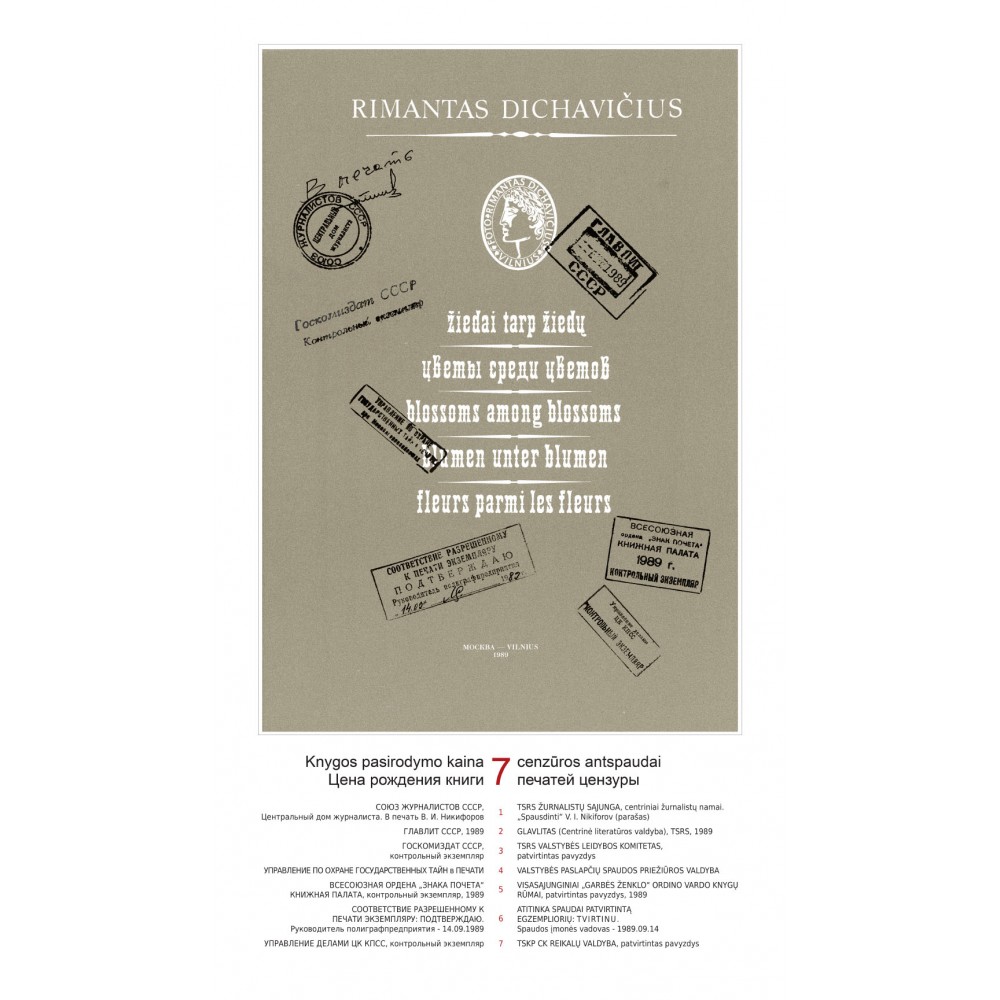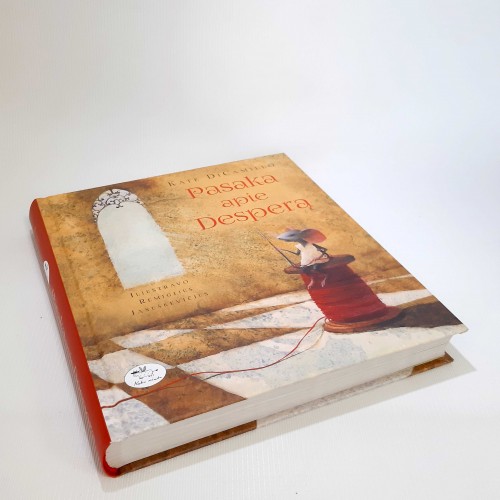Rimantas Dichavičius Book „Blossoms among blossoms''
Rimantas Dichavičius photo album ,, Blossoms among blossoms'' .
BLOSSOMS AMONG BLOSSOMS
Author – artist and photographer Rimantas Dichavičius.
BOOK LIKE LEGEND, a kind of ballad for a woman encapsulating the charm of blossoming nature and youth.
The book is considered a unique break-through having cracked the ice of the Soviet iron censorship.
Publication of the book was personally approved by Mikhail Gorbachev (Russian: Михаил Горбачёв), the President of the USSR at the time. After receiving the permission of the highest authority, another six permits were required.
As many as seven censorship stamps are available for this book implying a permission to print out and distribute the album.
Introduction to the album was written by Robert Rozhdestvensky (Russian: Роберт Рождественский), the most prominent poet of the epoch.
The album was printed out at the Experimental Printing House (Russian: Экспериментальная типография) in Moscow. The first edition contained 10 000 copies. However, when the album was printed out and book bindings were produced, only 5 000 copies were found!? The scandal broke out. An investigation revealed that during the printing process the workers of the printing house were putting still unbound album sheets around their bodies, thus taking the five thousand copies home with them.
The album was published four times (1987-1990) in an edition of many thousands of copies.
When the Chinese saw the newly printed album at the Moscow Book Fair in 1987, they asked for at least one million copies - just for a small group of experts.
The book was accompanied by an exhibition with the same title – BLOSSOMS AMONG BLOSSOMS. For the first time it was exhibited in Moscow, at the Photo Expo Centre Hall affiliated with the Union of Journalists (Russian: «Фотоцентр», Association affiliated with the Russia’s Union of Journalists). The opening ceremony was attended by many distinguished guests and diplomats from a number of countries including Jack Matlock, the U.S. Ambassador to the Soviet Union of that time. Remaining on display for a few months, the exhibition was visited daily by over 20 000 people. The book and the exhibition became the most significant highlights of PERESTROIKA (Russian: перестройка, was a political movement for reform within the Communist Party of the Soviet Union).
After exhibition opening and its presentation on the popular TV programme Vzgliad (Russian: Взгляд, ), the real storming of the exhibition followed. As militsiya (Russian: милиция, was the name of the police forces in the Soviet Union until 1991) forces failed to manage the crowd, horseback patrols were called in.
This situation was also noticed by criminal gangs. They seized and controlled the routes of the exhibition throughout the USSR. At the exhibition in Tbilisi (Sakartvelo оr Georgia), a gang shooting broke out.
The circulation of this book was enormous, but it was impossible to acquire it. Price of the album on the black market was tenfold higher. The author even asked the Press Committee for permission to buy his albums instead of getting the royalties.
The exhibition and the book launch was followed by another wave - wave of beauty. Some brave souls appeared who dared to organise the first beauty competition in the Soviet Union of that time. From all over the country, dozens of contestants of the beauty competition came to Vilnius to have their photographs taken here. I also took photos of a few girls at my home. The first beauty competition organised in Moscow changed the lives of many contestants.
Follow-up to the events of the album BLOSSOMS AMONG BLOSSOMS
The 1990s. Lithuania declared its independence. The just established government sent a delegation to the first International Economic Forum in Austria.
Representatives sat at a long table: the Austrians on one side and the Lithuanians on the other. The conversation was like a one-way game: the Lithuanians were talking for an hour, while the Austrians, as if under hypnosis, listened stiffly and remained silent. The Lithuanian delegation headed by Algirdas Mykolas Brazauskas, the Secretary of the Communist Party of that time, got slightly confused and agreed to have a break. As if anticipating possible embarrassments, the Lithuanians had taken with them on the way to the negotiations a dozen of albums ‘Blossoms Among Blossoms’. During the break, they decided to give an album as a gift to each Austrian delegation member. The hosts were very suspicious of the gift - took it as a hot ember assuming it was an ordinary communist manifesto. However, as they started turning the leaves of an album and making comments among themselves, they all reacted with a great emotion. When the Austrian representatives sat back down at the negotiating table, they all smiled. The negotiations moved on smoothly and significant agreements were concluded as well as contracts with a value of millions were signed.
On the return to Lithuania, A. M. Brazauskas summarised: ‘Our first business trip abroad was gently buffered by the album “Blossoms Among Blossoms” by Rimantas Dichavičius. Our foreign partners believed that communists are also humans after all’.
For many people, each striking event triggers an individual thought or interpretation: a play based on the motifs of ‘Blossoms Among Blossoms’ was staged at Vilnius Drama Theatre; in another space, a group of mime artists was gathered and music was composed for it (by the composer Gediminas Rimkus-Rimkevičius); a poem titled ‘Blossoms Among Blossoms’ was composed by the poet Janina Liniauskienė; a number of photographers and publishers have attempted to reproduce similar plots. Currently, discussions are underway for the production of an artistic film based on the motifs of BLOSSOMS AMONG BLOSSOMS and for the construction of a sculpture to symbolise this event in our culture.
Related products
(1 other product in the same category)







